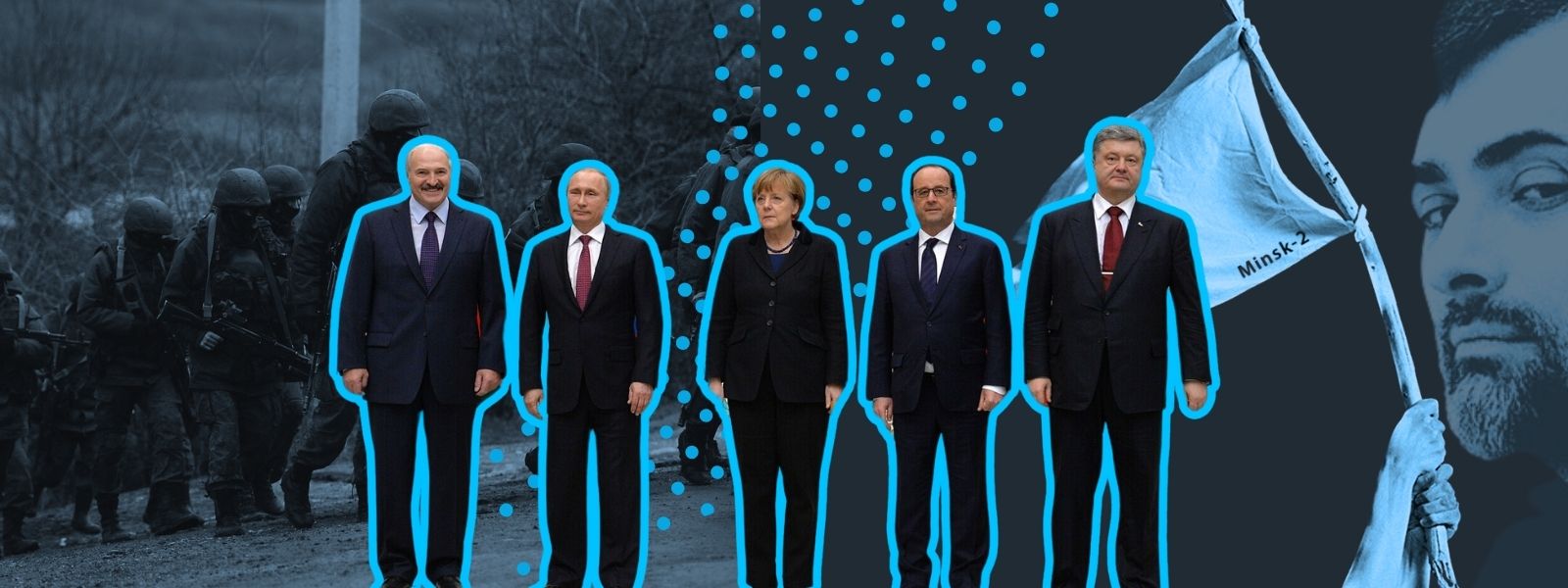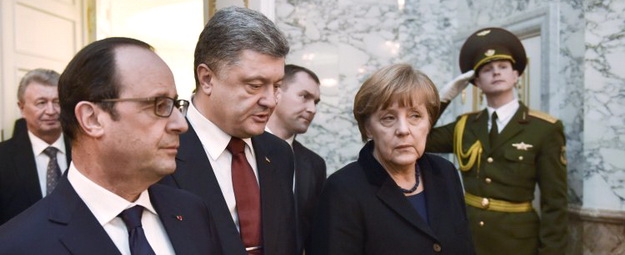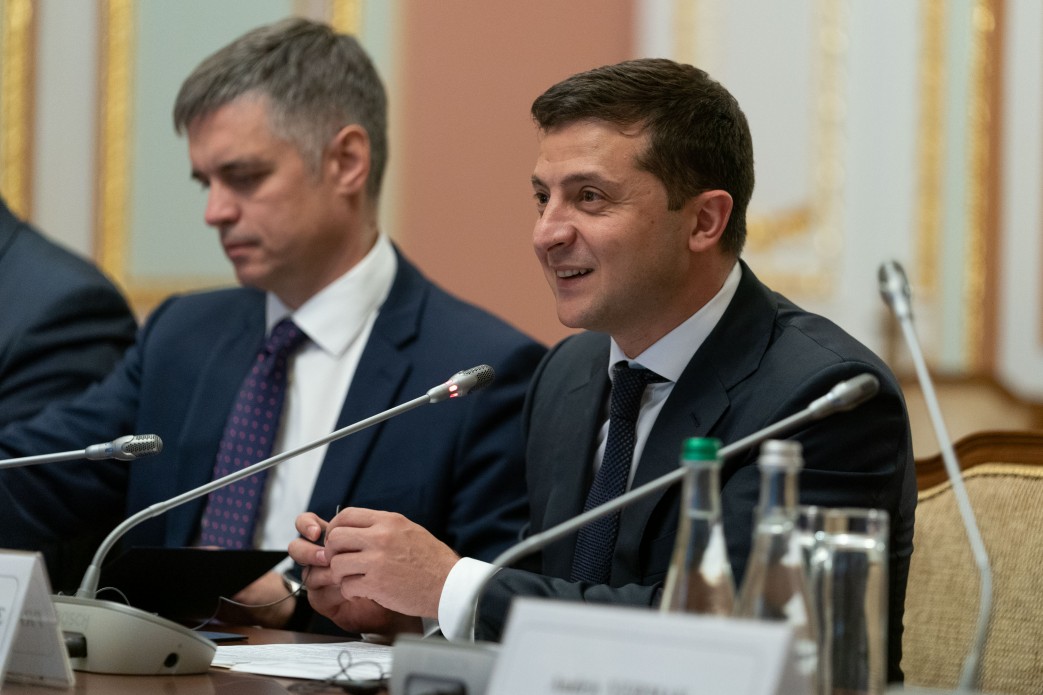Today marks two years since Russia's full-scale invasion of Ukraine. But in Ukraine, we speak of a decade of war, not two years.
The difference is profound.
If this were just a two-year conflict, perhaps Putin would be satisfied with his annexation of four Ukrainian regions. Perhaps Ukraine would accept a "compromise solution" given Russia's size and resilience, establishing a truce and returning to normalcy.
A horizon of ten years of war, however, reveals the naivety of these ideas.
Appeasement has been attempted and failed. On the contrary, failure to deter Russia’s aggression early on has grown into a much greater problem.
Russia’s occupation of Crimea and eastern Ukraine, and even earlier, Georgia, was met with a slap on the wrist from the EU and USA. The resources and territory Russia gained became launch pads for its full invasion of Ukraine.
With plans to wreak further havoc in eastern Europe, it has jumpstarted military production in Iran and North Korea and is consolidating forces around an “axis of evil.”
Attempts at a "compromise solution" like the failed Minsk Accords of 2014-2015 have proven fruitless. The agreements merely cloaked Russia's true goal of resurrecting its empire by carving out a sphere of influence in Eastern Europe.
Above all, recent history has exposed the naivete of underestimating the imperial ambitions of dictators like Putin. When he first revealed his imperial plans for Ukraine, they were dismissed until he acted on his genocidal vision.
Putin’s entourage now openly speaks about spreading the war to Eastern Europe. Yet, the sense of global urgency has waned: Russia has slipped from the position of main threat in most countries, with a troubling number of Europeans preferring their governments push Ukraine towards a “settlement” instead of supporting it until military victory.
Using a classified Ukrainian 2019 defense report, information obtained from hacked emails of Vladislav Surkov and a Kremlin proxy, Ukrainian intelligence intercepts, and witness testimonies, we reconstruct Russia’s 10-year path to a full-scale invasion of Ukraine and what could come next.
2008: the start of Russia’s wars of aggression and preparation for full-scale war against Ukraine
According to the Wall Street Journal, NATO’s ambiguous 2008 promise to leave the doors open to Ukraine and Georgia, but without any clear roadmap, catalyzed Russia’s turn towards aggression. It “painted a target” on the backs of Georgia and Ukraine without offering them any protection.
Four months later, Russia invaded Georgia, establishing puppet states that still erode its sovereignty.
Facing little consequences, Russia then embarked on revamping its military for the next invasion. This was necessary, as the 2008 war exposed Russia's forces as unfit for modern conflict.
“Russia prepared to invade Ukraine since 2008, after its war against Georgia,” Mykhailo Samus, security analyst, director at The New Geopolitics Research Network, and Deputy Director at the Army Research, Conversion, and Disarmament Center told Euromaidan Press.
After 2010, it launched a deep reform of its armed forces and a rearmament program during 2012-2020. Authored by Anatoliy Serdyukov, the reform was called by some Russian researchers the most significant one over the last 150 years.
It centered around reformatting its forces into a state of permanent combat readiness and an ambitious modernization of its weapons cache based on Western technologies and direct purchases of Western equipment.
It also retired divisions oriented around homeland defense in favor of new airborne, naval infantry, and special forces units optimized for power projection into neighboring states.
“In 2020, Russia should have been ready for a full-scale invasion, according to the 2012 plan. But things did not go as planned - a significant part of the nearly $760 bn for rearmament was stolen, then came the Euromaidan Revolution, and Putin was forced to act unprepared in 2014,” Samus explains.
After the signing of the Minsk Agreements of 2014-2015, Russia created three new armies around Ukraine and prepared for a rapid operation relying on special operations forces, paratroopers, and intelligence services for an invasion in 2022.
“But they miscalculated Ukraine's ability to fight,” Samus notes about Ukraine’s dogged resistance to Russia’s full-scale invasion when Russian troops were forced to retreat from the capital Kyiv after a month of unsuccessful attempts to take it.
2014: Russia starts war against Ukraine with Crimea occupation
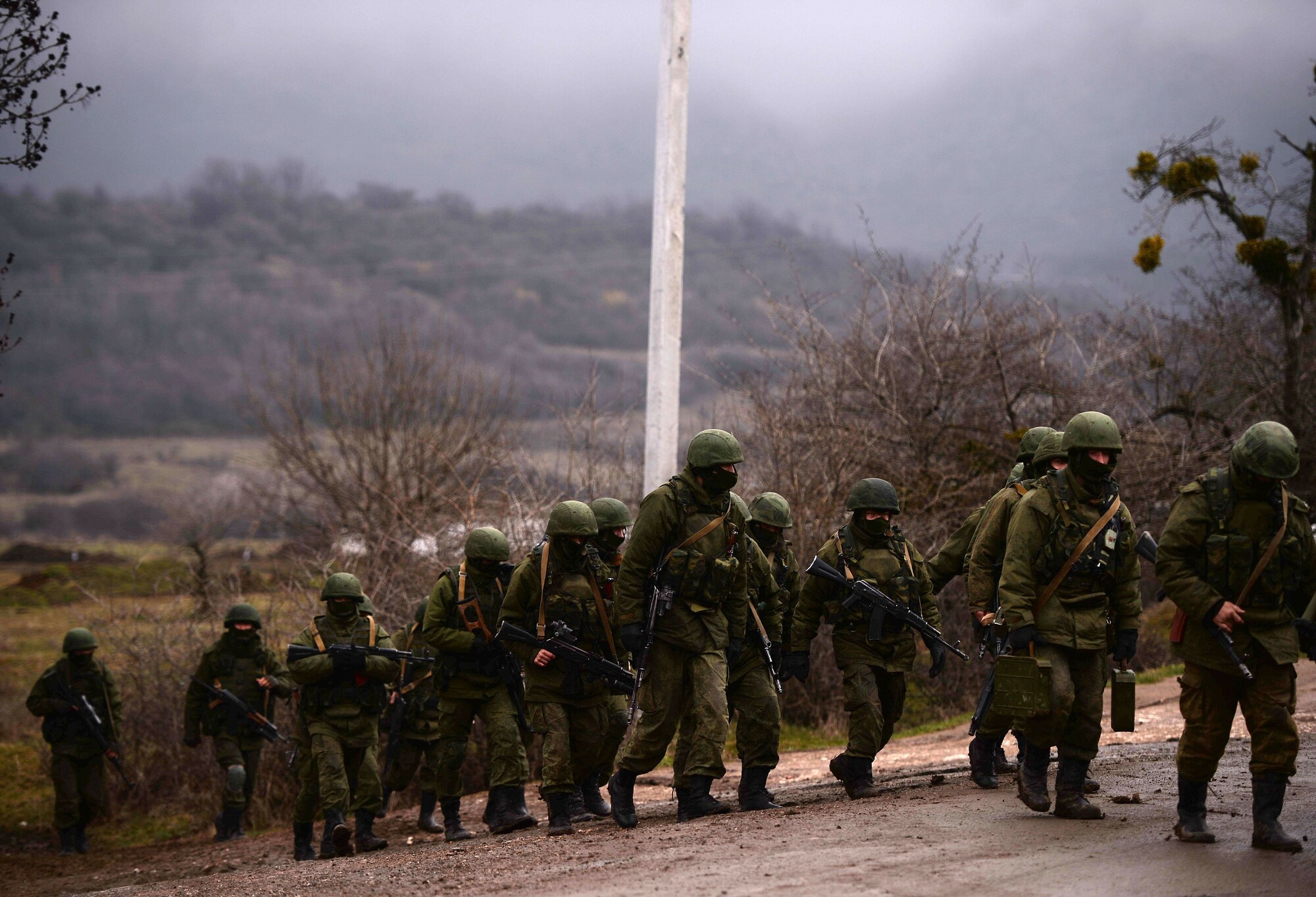
The Euromaidan Revolution, in which Ukrainians rebelled against President Yanukovych’s capitulation to Russian pressure to make a U-turn on Ukraine’s plans to integrate with the EU, caught Putin at a moment of increasing paranoia about democratic movements in Russia and elsewhere.
By that time, Russia had long prepared its plan to occupy Crimea.
On 20 February 2014, while Yanukovych was still in the capital, Russian troops stepped outside their designated areas within Russia’s Black Sea Fleet base.
Thanks to the covert deployment of non-Crimean Russian military units to the peninsula on the eve of the occupation, the number of Russian troops outnumbered the Ukrainian ones.
Aided by members of Russian PMCs, they, under the guise of unmarked soldiers, disarmed Ukrainian military units as Kremlin operatives Sergey Glazyev and Konstantin Zatulin orchestrated the political takeover while attempting to foment separatist uprisings in southeastern Ukraine.
Known as the Glazyev tapes, these intercepts of conversations of top Kremlin functionaries revealed how the Kremlin had over the years bribed and corrupted Crimean politicians, funded operations in Crimea, orchestrated the so-called secession “referendum,” down to finessing its questions that were based on legal acts compatible with the Russian State Duma.
In other regions of Ukraine’s southeast, project "Novorossiya" was set into motion.
Kremlin-funded pro-Russian uprisings were to culminate in Russian agents seizing local councils and requesting Russia invade the named regions, the conversations between Zatulin and Glazyev show.
This task ultimately failed, thanks to grassroots resistance.
Russia’s war in the Donbas and establishment of proxy statelets
The Russian takeover of eastern Ukraine, which culminated in the establishment of two proxy “republics,” the “Luhansk and Donetsk People’s Republics,” was more successful.
Its story was told by Igor Girkin, the FSB colonel who self-admittedly “pulled the trigger of war” in eastern Ukraine:
“If our unit had not crossed the border, it would have all fizzled out, like it did in Kharkiv or Odesa. Several dozen casualties, those with burns and those arrested. And that would have been the end of it… It was practically our unit, which got this ongoing war moving.”
As Ukrainian troops zoned in on the Russian-separatist forces of Donbas in the summer of 2014 and it appeared that Ukraine’s “Anti-Terrorist Operation” would soon result in victory, an influx of Russian troops across the border at the crucial moment ensured control of the Russian proxies over the Russo-Ukrainian border, carried out a massacre of Ukrainian soldiers in Ilovaisk, and expanded the area of Russian proxy control in eastern Ukraine.
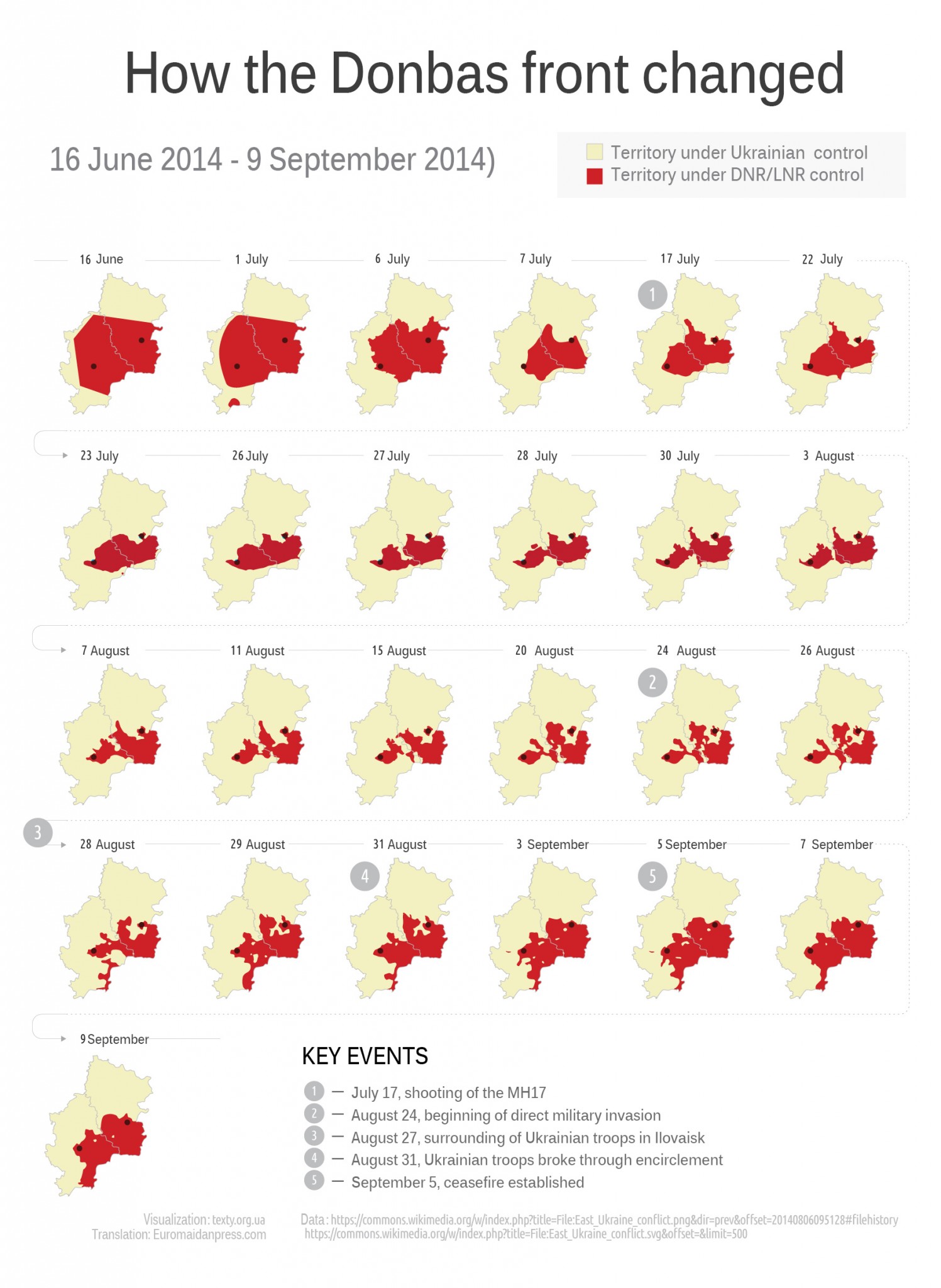
It was this area that was codified and stabilized for the next eight years in the ill-fated Minsk Agreements, which blessed Russia’s occupation in Ukraine under the guise of “separatism” and enabled Russia to grow and expand its strike force, preparing for a full-scale invasion.
Maintaining plausible deniability in Donbas: PMCs and puppetmaster Surkov
Crucial for these Russian plans were private military companies, who acted as regular troops of the Russian army using Russian army equipment but ensured a guise of plausible deniability.
The number one private military company used for these purposes was Wagner.
Having been tested out in joint operations with the Russian army during the occupation of Crimea, the nascent Wagner PMC grew into a major Russian force that pulled the shots in eastern Ukraine, from enabling a sham “referendum” on secession from Ukraine to participating in major battles against Ukrainian troops, such as the operation to seize Luhansk airport.
These revelations were provided in great detail by ex-Russian GRU officer Igor Salikov, who defected from Wagner and will now testify in the Hague.
Notably, Salikov describes how Russia went to great pains to ensure that no modern Russian military equipment was ever discovered, as this would expose Russian military participation in the war.
Instead, Russian units were to use only legacy Soviet equipment in service with the Ukrainian army to avoid giving Russia away.
In a notable incident of such an operation, Wagner commander Utkin had ordered the PMC to evacuate modern Russian military equipment destroyed by Ukrainian troops near Debaltseve in 2015, so they would not betray the involvement of Russia’s regular forces.
The mastermind of these deceptive operations was Putin’s advisor and chief puppetmaster Vladislav Surkov, Salikov said. It was he who carefully constructed the fiction of a “Donbas uprising,” handpicked proxies like Borodai to lead the breakaway republics, and ran the political side of the incursion, and oversaw military moves.
The Surkov Leaks: the inner workings of Russia’s hybrid war in Ukraine;
What Surkov’s hacked emails tell about Russia’s hybrid war against Ukraine.
Apart from handpicking the “authorities” and “parliaments” of Russia’s proxy statelets in Ukraine and managing all aspects of their life, Surkov ran a wider campaign to erode Ukraine’s sovereignty.
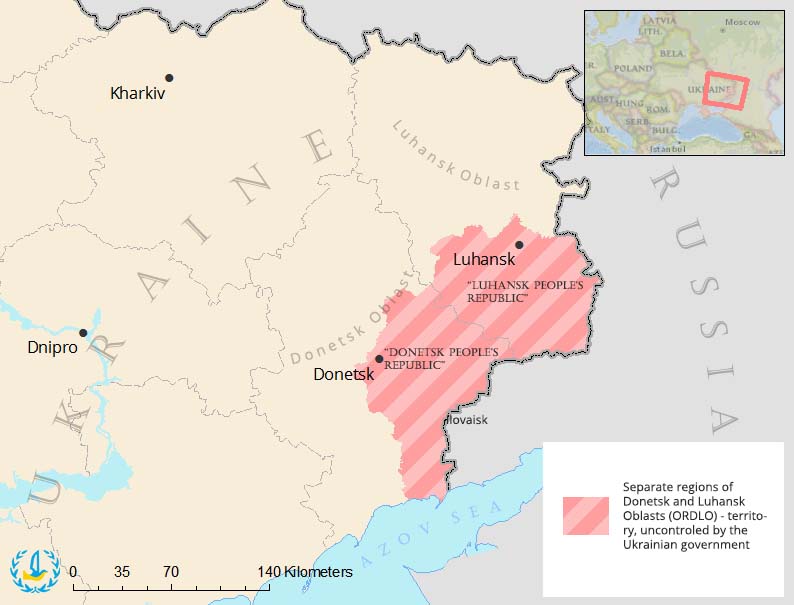
The Surkov Leaks showed that over 2014-2015, the Kremlin spared no funds to finance pro-Russian groups around Ukraine to conduct activities ranging from graffiti calling on Putin to “introduce troops” to a campaign to federalize Ukraine by changing its constitution to inciting regions with a diverse ethnic composition to secede.
Over the next eight years, Russia’s “republics” in Ukraine would disappear from the radars of the world. The occupation regime cracked down on journalists and banned entry to disloyal ones, a 2016 email hack revealed.
Meanwhile, Western politicians and journalists continued to repeat the Kremlin mantra that the military forces in eastern Ukraine were “pro-Russian separatists” – a gaffe that some journalists are only now starting to reconsider.
Minsk Agreements: giving appeasement a chance
In 2014-2015, two protocols essentially froze Russia’s war in Donbas.
The Minsk Agreements, brokered by France and Germany, and up till Russia’s full-scale invasion touted as the only solution to end the war in Ukraine, were an attempt to usher away the problem of Russia’s aggression in hopes that appeasement would allow the EU to continue living and doing business as usual.
A prime example of the Kremlin’s use of “lawfare,” they were designed to ensure Ukraine’s capitulation.
Starting out with a plan by Ukraine’s post-Euromaidan President Poroshenko to end the conflict in Donbas and reintegrate the region, the tentative agreements, after a series of Russian military victories enabled by the participation of its regular army, morphed into a deal where reintegration was replaced by autonomy, and Ukraine was obliged to bankroll Russia’s proxy “statelets” while ensuring their Kremlin-handpicked “leaders’” participation in Ukrainian political life, leaked emails from Surkov's desk reveal.
This deal was a no-go for Ukraine from the start. Yet, European partners pressured the embattled country to comply: Putin’s “escalation blackmail” and the shadow of a conventional and even nuclear war in Europe hit a trigger point with EU leaders, particularly then-German Chancellor Angela Merkel.
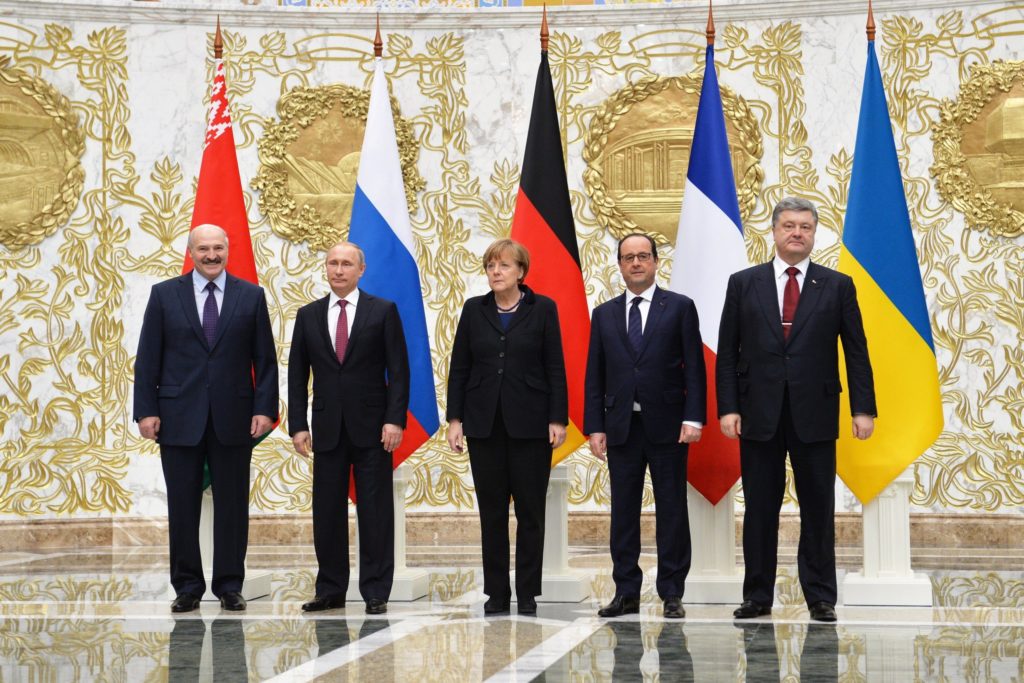
The result was a frozen conflict nurtured throughout eight years by a Russian military lifeline over the border that conveniently evaded OSCE oversight.
Such a result was pre-planned by the Kremlin. The hacked emails from Surkov’s office show that a Kremlin think tank assessed Moscow is fine with such a frozen conflict situation, as it would allow preserving levers of influence over Ukraine’s foreign policy movements, such as NATO accession, by unfreezing the conflict.
As well, Moscow would be able to continue insisting on Ukraine’s federalization.
Trending Now
Further intercepts from Surkov’s office revealed that the Kremlin repeatedly sought to leverage its proxy statelets and the ambiguous text of the Minsk Agreements to force Ukraine into absorbing the Kremlin-run entities into its economic and political fabric, where they would be a perpetual source of Russian disruption.
In parallel, it ran a disinformation campaign alleging that, in rejecting Russia’s demands, Ukraine “does not want peace.”
Behind the ruse of the Minsk Agreements and the simmering ceasefire violations at the contact line in Donbas, Russia prepared its military for a full-scale invasion. More advanced weaponry began to flow steadily across the border in an operation codenamed “Voentorg.”
The presence of sophisticated Russian weapons in Donbas was spotted repeatedly by OSINT analysts over the eight years of war.
Role of Russia’s army in the occupation of Crimea and Donbas
According to Russian military expert Aleksandr Golts, the entire operation to capture Crimea was rehearsed in early 2013 with the participation of all of Russia’s forces. For instance, during the strategic exercises "West-2013," the Russian Special Forces practiced the tactics of using irregular guerrilla-type formations as part of a strategic military operation, which was already put into practice in Ukraine in 2014.
Then-head of Ukraine’s naval coastal defense Ihor Voronchenko concurs. At the trial of runaway president Yanukovych, he testified that Russia had directly prepared for the occupation since November 2013.
The greatest indicator of successful reforms in the Russian army, which was gearing into a mode for offensive operations outside Russia, was the strategic deployment of a group of 45-50,000 Russian troops to the border with mainland Ukraine on 27-28 February 2014 -- an unprecedented indicator of strategic mobility for Russia, -- the classified Ukrainian defense report from 2019 seen by Euromaidan Press states.
It is this rapid attack group deployment that convinced Ukraine and its Western partners not to fight against Russia’s occupation of Crimea.
In the following years, the use of Russian ground forces in the war against Ukraine required the involvement of units (including elite airborne and marine units) from virtually all regions of the Russian Federation, including the Far East and even the Kuril Islands, in the war in Donbas.
“Out of the 12 armies that were part of the Russian Land Forces in 2014, only two, deployed on the border with China, were not involved in the war with Ukraine. At the same time, in 2014 alone, between 101 and 116 units (31-32% of the total number) and formations of the Russian Army were involved in the war against Ukraine in Donbas, using their regular equipment and weapons there,” the classified defense report reviewed by Euromaidan Press reads.
The presence of these Russian army units was repeatedly evidenced by OSINT investigations from Informnapalm, who collectively identified more than 2,500 regular Russian soldiers from 98 regular Russian military units.
It was laid bare by the tragic shooting down of Malaysian airliner MH17 over Donbas in July 2014 with a Russian BUK-1 system.
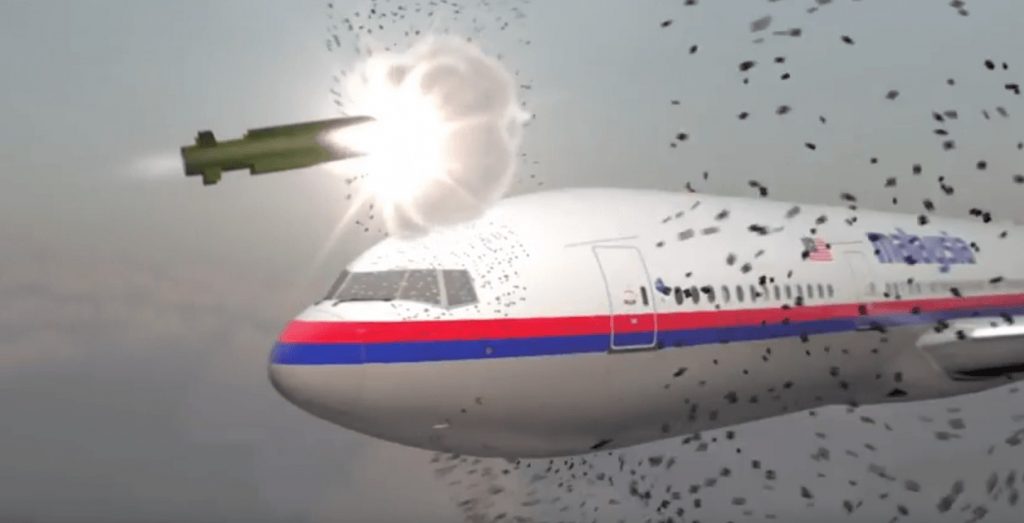
As well, this was rather bluntly exposed by the soldiers themselves, with a famous interview of a tank operator from Buryatia telling how his battalion was sent to prevent a Ukrainian breakthrough in early 2015, and sporadic Russian POWs captured in Donbas saying they were on active duty.
After establishing control over eastern Ukraine, the Russian army had shaped a combat-ready army from the ragtag forces and military in the region, at the same time participating in military operations.
In 2018, the Ukrainian Joint Forces Operation, tasked with defending Ukraine throughout the “frozen conflict” era of the Minsk Agreement, counted 32,000 armed members in Russia’s proxy republics, a third of whom were Russian mercenaries and regular forces.
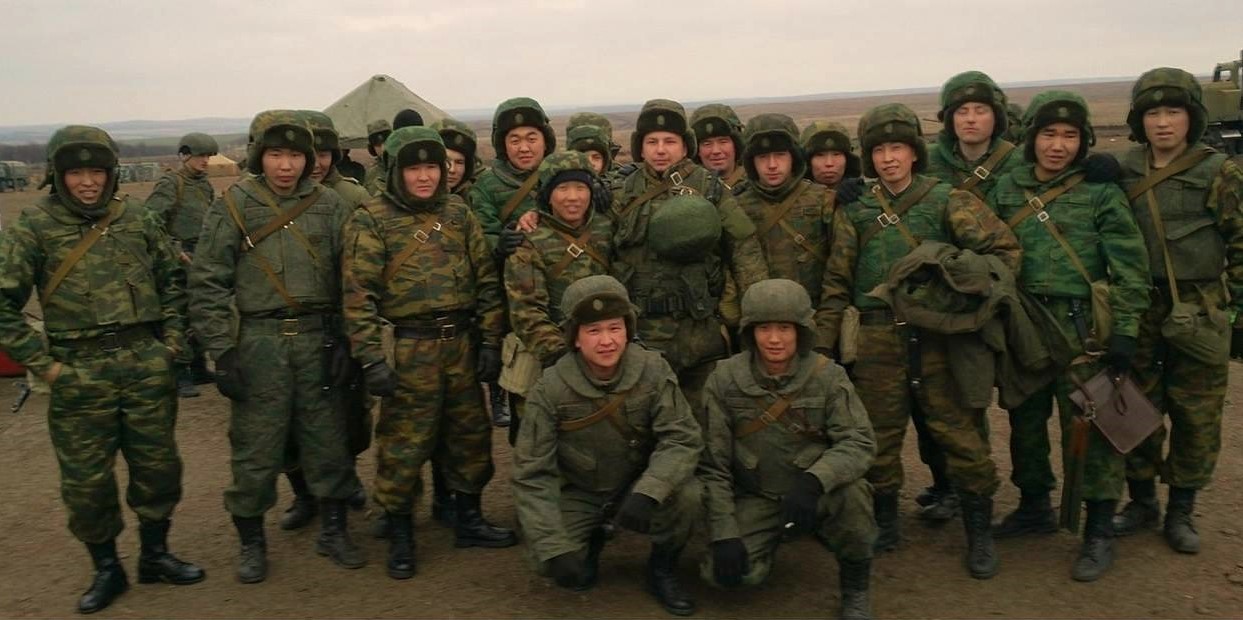
Russian military evolution pointed to an inevitable full-scale invasion of Ukraine
“The occupation and annexation of Crimea and occupation of part of Donbas cannot be considered a victory for the Moscow strategists,” the classified 2019 defense report said.
Moscow’s neo-imperial vision was that the Ukrainian nation would be fully destroyed and Ukraine would fully come under Russian control. Therefore, the 2014 aggression it waged against Ukraine had the goal of either full occupation of Ukrainian territory, establishing a puppet regime in Kyiv, or dividing Ukraine into several weak pro-Russian entities.
However, all Putin got out of his 2014 occupation was difficulties with sanctions and international lawsuits, with the conflict zone in Donbas at best earning him high-level meetings with Trump, Macron, or Erdogan, the report goes.
“From the military-political and military-strategic point of view, Russia has not achieved its goals on the Ukrainian direction and continues to build up its capabilities to fulfill its main task in relation to our country - the destruction of Ukraine as an independent state and the destruction of the Ukrainian nation with its transformation into a part of the ‘single Russian people’,” the report warned Ukraine’s leaders, providentially noting that the future conflict would be a lightning operation employing all the arsenal of hybrid warfare.
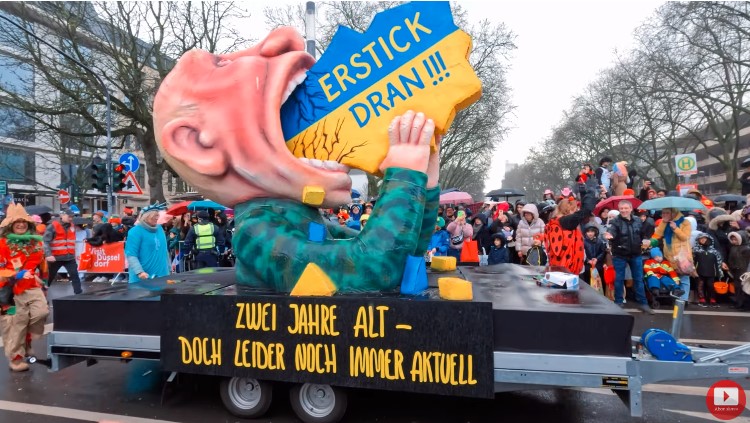
As the frozen conflict seethed in Donbas and Russia succeeded in convincing the world that its proxy statelets were “separatist republics,” it continued to transform its army into a force capable of not only invading Ukraine but going further.
“The evolution of the Russian military machine after 2014 was entirely aimed at preparing for a large-scale offensive against Ukraine. After the annexation of Crimea and the failed attempt to realize the ‘Novorossiya’ project, Russia radically built up its forces around our country and, in fact, was ready at this time for a large-scale offensive against Ukraine, having created a powerful attacking force: 1st Tank Army and 20th Combined Arms Armies in the northern and eastern directions, as well as the 8th Combined Arms Army in the southern direction (which also includes the occupation contingent in Donbas - the 1st and 2nd army corps in Donetsk and Luhansk),” the classified defense report Euromaidan Press reviewed says.
Although the declared purpose of these armies was to confront NATO, the anti-Ukrainian direction was obvious: to create permanent military and psychological pressure on Ukraine, apart from intimidating the EU to lift sanctions, the 2019 report says.
Additionally, Russia armed its missile brigades with new Iskander launchers. Out of the eight missile brigades Russia deployed in its European territory, five could be used against Ukraine.
Already in 2019, Russia had “the capability to launch a surprise missile strike on the territory of Ukraine along the entire length of the Russian-Ukrainian border to a depth of 350-400 km. The number of missiles in the first salvo could range from 48 to 120 missiles,” apart from air-and sea-launched cruise missiles, the report says.
Despite claiming that its military buildup was in response to strengthened NATO forces, the strike force Russia accumulated along the Ukrainian border was an “absolutely inadequate” response to the meager brigade and four battalions in the Baltics and Poland.
The militarized peninsula will be used for massive missile and air strikes on critical military and civilian infrastructure on the territory of Ukraine, while the Russian Black Sea Fleet will blockade Ukrainian ports in the northern part of the Black Sea, dealing a blow to Ukraine’s economy and creating conditions for the invasion of southern Ukraine and establishing a land bridge to Crimea, it said.
All these predictions materialized in 2022.
To achieve this goal, Russia made its bets on developing the naval forces of Crimea, armed with Kalibr cruise missiles with a firing range of more than 2,000 km.
Already in 2020, Russia planned to have up to 24 surface ships and submarines capable of carrying Kalibr cruise missiles with a total number of up to 168 missiles in Crimea, creating the conditions for establishing a total Anti-Access and Area Denial Zone.
During the full-scale invasion, Russia indeed used all these assets to suffocate Ukraine’s export routes through the Black Sea ports. However, in 2023, this strategy was stymied by Ukraine’s ingenious asymmetric naval drone strategy, which unblocked its Black Sea export routes.
In another providential assessment, the 2019 report stated that with a “great degree of certainty,” the territory of Belarus will be used to base Russian aviation and missile troops to conduct strikes against Ukraine – a prognosis that materialized in 2022-2023, when Belarus was used not only as a missile launchpad, but as a bridgehead for a land invasion.
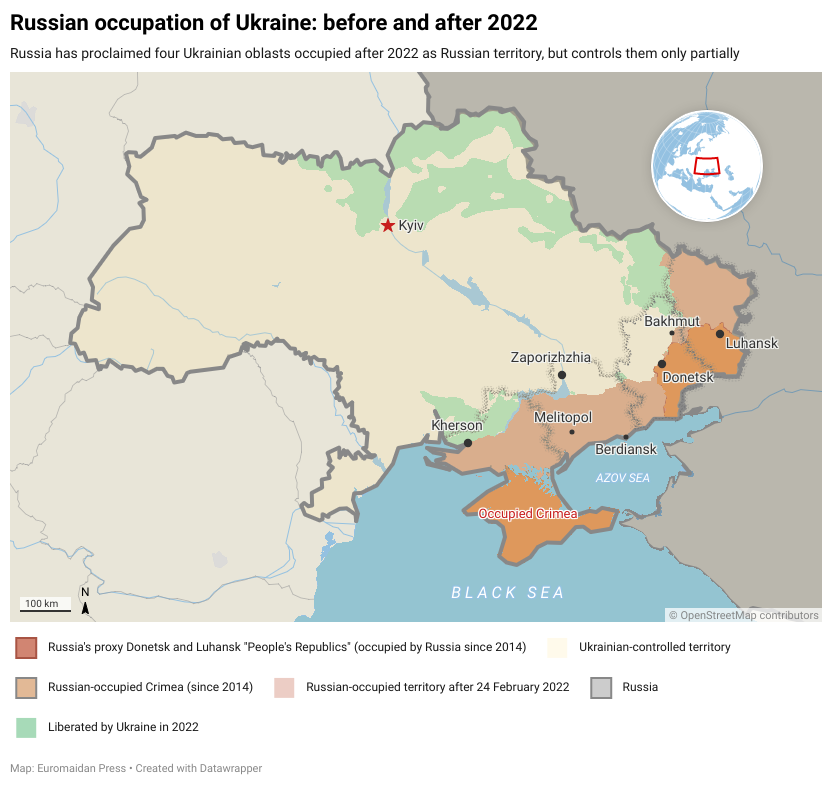
Russia's military transformation and doctrinal overhaul point to inevitable confrontation with the West
In 2019, Ukrainian Lieutenant General Yuriy Radkovets forecasted that Russia would complete the strategic deployment of its army in the western and southwestern directions – i.e. to the border of Ukraine – by 2020-2022.
The quality of this deployment was tested and improved during the yearly military exercises.
“West-2017,” for example, saw Russia pushing through the Suwalki corridor to “return the Russian historical territories” in Latvia and Estonia, achieve the neutrality of Baltic countries, and using tactical nuclear weapons to “deescalate” the conflict and make NATO sit at the negotiating table on Moscow’s conditions.

Already in 2019, forces and weapons deployed around Ukraine’s borders indicated that Ukraine was “viewed by the Russian military and political leadership as the most likely and most desired target of Russian aggression,” the defense report says.
However, the invasion of Ukraine is only part of Russia’s broader military strategy.
As stated above, since Russia's 2008 war with Georgia, Moscow has undertaken a sweeping reorganization and modernization of its armed forces, reflecting major shifts in military doctrine towards open confrontation with the West.
New doctrinal documents approved under Putin label the US and NATO as the main threats to Russia, accusing them of trying to undermine Russia's influence in its claimed "sphere of domination" and erode its nuclear deterrence.
These doctrinal documents had seen a return to the terminology used at the height of the Cold War, where the United States and its allies were referred to as "aggressors" ready to attack treacherously at any time, using "technologies of color revolutions and soft power," and also called "probable adversaries” like fifty years ago.
In such a world of “treacherous adversaries,” Russia must be ready to act - by striking pre-emptively with strategies of "hybrid warfare," seamlessly combining military and non-military means to destabilize opponents, it follows from the documents.
Strategically, Russia has focused on massively reinforcing its western and southwestern flanks, seen as the main avenues for eventual conflict with NATO. New tank and combined arms armies have been formed all along Ukraine's borders, equipped with modern Iskander-M missile brigades and new T-72B3 tanks, T-80BVM tanks, and advanced Armata platforms.
Ukraine became the proving ground and the first victim of Russia's military transformation. The 2014 invasions of Crimea and the Donbas allowed Russia to test new strategies of hybrid warfare, which were then codified into doctrine.
According to the EU's FINABEL report, Russia followed the step-by-step process for hybrid warfare outlined in Gerasimov's hybrid warfare vision, combining covert action by special forces with economic pressure and propaganda to legitimize Russian military intervention.
Russia’s army transformation reflected Russia’s doctrinal shift to expand its “civilizational space” and zones of “exclusive influence” where the “Russian World' must dominate."
Russia’s imperial plans are best understood in the light of an essay published by the same puppetmaster Surkov on the eve of Russia’s full-scale invasion on 15 February 2022.
There, he questions the legitimacy of the western border of Russia (including the borders with Ukraine and the Baltic states), claiming that it was born out of the Treaty of Brest-Litovsk, arguing that Russia should abolish the "wicked peace" that keeps it confined by the borders.
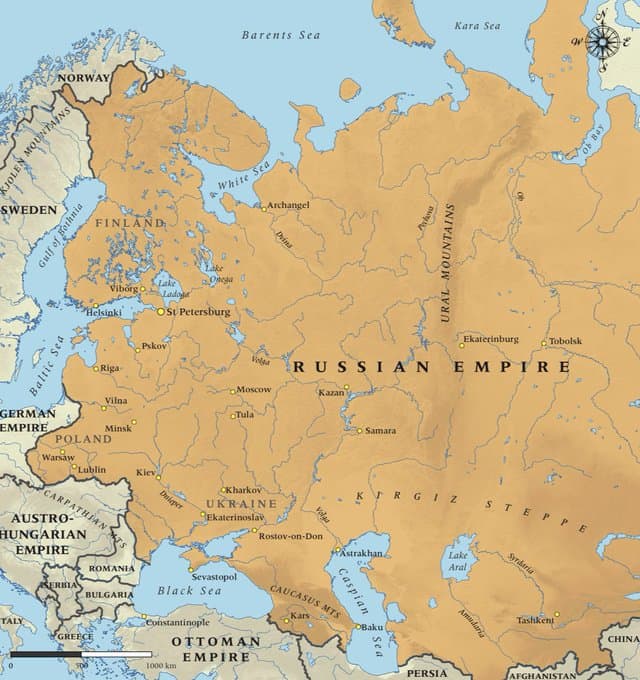
Nine days later, Russia launched its full-scale invasion of Ukraine. There is no reason to believe that it will stop there, unless it is stopped.
Related:
- Leaked Kremlin emails show Minsk protocol designed as path to Ukraine’s capitulation – Euromaidan Press report
- Glazyev tapes, continued: new details of Russian occupation of Crimea and attempts to dismember Ukraine
- Russia prepared to occupy Crimea back in 2010 and other things we learned from Yanukovych’s treason trial
- Wagner defector exposes Russia’s Donbas ruse, false-flag ops in bombshell interview
- The Surkov Leaks: the inner workings of Russia’s hybrid war in Ukraine
The Surkov Leaks: the inner workings of Russia’s hybrid war in Ukraine;
What Surkov’s hacked emails tell about Russia’s hybrid war against Ukraine.

